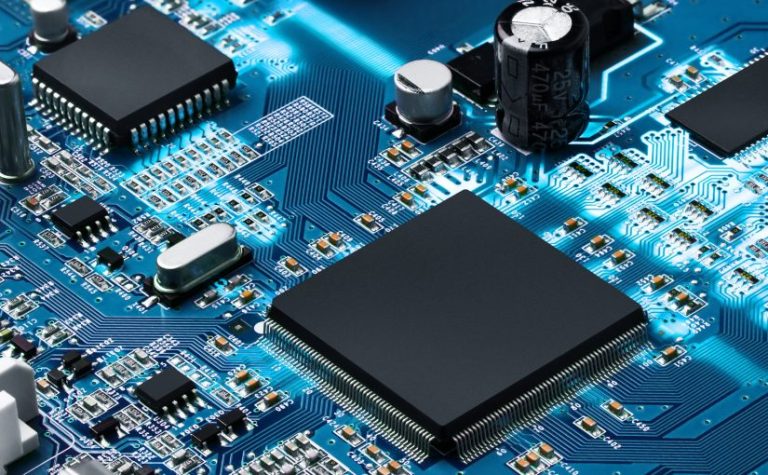Memory-Centric Embedded System Design: Navigating Cache, SRAM & DRAM
Memory architecture is one of the most important elements that define the performance, power and general functionality of any system in the fast changing environment in embedded product design. The current embedded systems require advanced memory management techniques that are fast, large, and energy efficient with strict real-time constraints. The complex interplay between cache memory, Static Random Access Memory (SRAM) and Dynamic Random Access Memory (DRAM) is a new reality engineers of next-generation embedded solutions have to embrace.
The Foundation of Memory Hierarchy in Embedded Systems
The hierarchy of memory is the central concept in the design of efficient embedded systems, as it introduces a well-organized way to store and access data, maximizing performance and cost. In this hierarchical system, faster and more expensive memory is brought near the processor and the slower and larger memory is used to store bulk. The successful execution of this hierarchy has a direct effect on the success of embedded product design projects, including the response times, battery life of portable devices and so on.
The principle behind memory hierarchy is that the basic concept of locality of reference is that programs have the tendency to access the data and instructions that are either spatially or temporally proximate to the previously accessed data and instructions. Designers of embedded systems take advantage of this principle to design memory architectures that are as performance-optimal as possible and at the same time power-efficient and cost-effective and this strategy is especially important in low-resource settings where each microsecond of latency and each milliwatt of power is critical.
Cache Memory: The Performance Accelerator
Cache memory is the quickest level in the memory structure, being a high rate buffer between the processor and the main memory. In the design of an embedded system, the implementation of the cache must take into account the size, associativity and replacement policies so that it can support the best performance of a particular application. Cache memory selection and configuration are a critical factor in the design of embedded products because their responsiveness and energy efficiency directly depend on these factors.
Level 1 (L1) cache is often on the same chip as the processor, and is accessed as quickly as possible. This closeness removes the delays that are caused by accessing memory outside the processor which allows the processors to execute at high speeds. L1 cache design is a trade-off between size limitation and hit rates because larger caches use more power and silicon area, but may have better performance due to fewer cache misses.
The memory hierarchy is further stretched to include level 2 (L2) and level 3 (L3) caches with even greater storage capacities and only marginally higher access times. These cache levels are especially useful in embedded systems that need to process complex algorithms or large amounts of data, and the working set is larger than the capacity of the L1 cache. Cache optimization is an area of hardware design services that can be given a lot of attention because a well-optimized cache can sometimes result in huge performance gains without having to use faster processors or more memory bandwidth.
SRAM: Speed and Reliability Combined
Static Random Access Memory (SRAM) has a special niche in the memory architecture of embedded systems because it is faster and reliable in terms of its characteristics. In contrast to DRAM, SRAM does not have to periodically refresh data, and thus is suitable where the application needs consistent, predictable performance. This trait is also invaluable in real-time embedded systems where the predictability of timing is more important than brute storage capacity.
SRAM has low access times and low latency, which makes it the most commonly used in cache memories and special buffers in embedded systems. Refresh requirements are unnecessary, which makes the design of memory controllers simpler; they also save power in applications that access memory in sporadic patterns. SRAM is often suggested in professional hardware design services when mission-critical embedded systems cannot afford losing data integrity or sacrificing data access speeds.
SRAM is still much more expensive per bit than other memory technologies and it is important to give attention to capacity needs when designing the embedded product. Depending on the performance requirements, engineers may also have to compromise between the performance characteristics of SRAM and budget or physical space constraints, which has led to hybrid memory architectures, where SRAM is strategically located where it can be most beneficial to system performance.
DRAM: Maximizing Storage Capacity
Dynamic Random Access Memory (DRAM) is the most common system memory used in most embedded systems since it has a large storage capacity and is relatively cheap per bit. The key feature of DRAM is the capacitive nature of storage that needs to be periodically refreshed to preserve the data. This refresh requirement presents timing issues that designers of embedded systems have to pay close attention to in order to achieve uniform system performance.
The latest DRAM technologies (e.g., DDR4 and DDR5), offer high bandwidths, which are well suited to embedded applications requiring high bandwidth, e.g., image processing, video streaming, and complex signal processing algorithms. DRAM technology is still advancing to extend the limits of bandwidth and capacity, slowly increasing power efficiency, and thus becoming more appealing to embedded product design applications.
Optimization Strategies for Memory-Centric Design
Memory optimization is a holistic activity, and successful embedded system design must view the memory hierarchy as a whole and not as components in isolation. This is a holistic approach that entails profiling of application memory access patterns, pinpointing performance bottlenecks and applying specific optimizations that can deliver maximum system performance. It is more than just picking the right memory technology but also forming synergies to achieve the best performance in use cases.
Conclusion
Embedded system memory is an area that is still developing and new technology is on the horizon that will change the memory hierarchy as we know it. Several types of non-volatile memory such as flash memory and newer storage-class memory options are confusing the distinction between volatile and non-volatile storage. Such technologies provide special features that the embedded product design departments need to consider to determine their possible effects on the architecture and performance of systems.
Memory-centric design will grow in importance, as embedded systems grow in data-intensity and complexity. New memory access patterns and performance requirements are posed by the incorporation of artificial intelligence and machine learning functionality into embedded systems, which challenge traditional memory hierarchy assumptions. The hardware design services offered should be able to change their approaches to suit these changing needs and still provide reliability and efficiency required in embedded systems.







